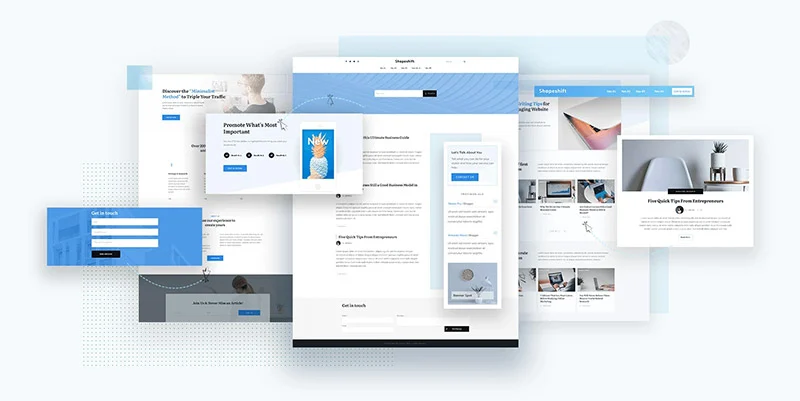How do Social Media Algorithms work?
Most individuals now engage in social media on a daily basis because it has become so engrained in our culture. Additionally, platforms like TikTok and Twitch are looking to promote in order to reach new audiences. Not only are existing networks gaining subscribers daily, but so are these new platforms.
YouTube and Facebook and Instagram, are also most popular websites in the globe in 2021, after Google. For networks that are only 16 and 17 years old, that is quite astounding!
Because there are so many people on these sites, order and relevance must be established, and an algorithm provides just that.
Since social media algorithms are always evolving, it is challenging for marketers to stay current. Although it is impossible to know every aspect of each change, we have a good understanding. The algorithm in use determines how you rank in social media advertisements and where your material appears on a user’s news feed.
You’ll learn about the various social media algorithms in this post as well as how to distribute your content and increase social media interaction.
What are Social Media Algorithms?
An algorithm is a set of mathematical rules that describe how a collection of data should behave. Algorithms in social media helps with maintaining order and ranking search results and advertisements. For instance, an algorithm on Facebook directs the order in which sites and content are displayed. (If you want to get more views, you can apply some excellent Facebook algorithm engagement tricks.)
There were over 4.5 billion internet users as of October 2021, and of these, nearly 57 percent of the world’s population used social media. Monitoring and managing that is a huge task. Because of this, algorithms play a vital role in evaluating the legitimacy and positioning of social media accounts and content.
Although there is no manual on the many algorithms and how to manage them, we are knowledgeable enough to successfully navigate the social media environment. A user-friendly focus, similar to the one Google ranks by, has been one of the significant changes in the last few years. This motivates users of social media to post pertinent, excellent material and interact with customers.
Why do Social Algorithms exist & Why do they change?
On social media, algorithms are employed to organise the items in a user’s news feed. Given the abundance of content, it gives social networks a mechanism to rank the material they believe users would find interesting.
That may sound fantastic to a marketer because it puts your content in front of the proper audience. Beware though, social media algorithms are far from flawless.
An algorithm’s main function is to weed out unimportant or poor-quality stuff. If your content does not meet the requirements, it could be buried or removed from feeds. Additionally, since Google adds a new ranking factor to the mix, page experience, it’s imperative that you familiarise yourself with fundamental web principles to guarantee that your content is noticed by both users and bots.
According to a YouTube research, videos that the algorithm chose but were not relevant to the user received millions of views. In fact, the same survey discovered that 60% of users came across YouTube videos showing people engaging in risky or disturbing conduct, while 64% of users came across videos that seemed misleading or inaccurate.
Social networks routinely modify their algorithms to enhance user experience since they are an imperfect system. The answer? Make sure your content is of the highest calibre, pertinent, and enticing, and monitor any algorithm changes to determine whether you need to adjust your social media strategy.
Types of Social Media Algorithms
Platform-specific social media algorithms differ. As a result, you can separate it by social media brand. Facebook, Pinterest, LinkedIn, Twitter, and Instagram are the primary social media sites. Here’s a glance at each and how it ranks content and users at the moment.
Facebook Algorithm Explained

The secret to Facebook’s algorithm is meaningful consumer involvement. It was designed to boost the significance and popularity of neighbourhood, family, and friend posts over commercial ones. There are four ranking signals in it:
- Popularity
- Type of content
- Relationships
- Recency
Facebook’s algorithm has undergone numerous modifications over the years, making it challenging to get posts, especially organic ones, in front of the correct audience without planning and strategy.
The amount of organic reach on social networks is dwindling. The average organic post reach on Facebook has decreased by more than 5% as a result, and the interaction rate is only 0.25 percent, falling to 0.08 percent if you have more than 100k followers.
Although paid Facebook content is ranked individually, engagement, consumer response, and subject matter relevancy still play major roles. Important pointers for navigating Facebook’s algorithm include:
- For your brand to respond to comments and inquiries, forging connections is essential.
- As Facebook gives more importance to reaction buttons, try to encourage a response that is more robust than a simple “like.”
- Use Facebook Stories instead of relying on the algorithm to get viewed because they are not included in Facebook’s newsfeed.
- Live video has higher engagement, and because of this, the algorithm favours it.
- Before posting any external content, exercise caution and make sure it is reliable and truthful.
Pinterest Algorithm Explained

Pinterest is considered a social networking platform even though it has a radically different design and follower growth approach. The four main components of Pinterest’s algorithm are:
- Topical Relevance
Relevance of the topic - Pin Quality
- Domain Quality
- The Pinner’s Standard
Its guided search approach employs information gathered from prior content encounters to promote new links. For instance, Pinterest is more likely to display additional wedding hairstyles to you the following time you log in if you have already viewed wedding hairstyles.
The advantage of this interest-based algorithm is that it consistently displays content that Pinterest is aware the user will find interesting. Additionally, their 2020 introduction of “controllable distribution” limits the amount of fresh information that customers can view based on previous viewings. This increases the likelihood that the audience will consume and like the information.
Due to the Covid-19 pandemic in 2021, people modified their searches and intentions in favour of goods that shared their ideals. Pinterest states that this has three implications for businesses:
- Know your morals.
- Test advertisements that are based on your values rather than merely your items.
- Make it obvious how customers will live out and promote their values by buying from you.
If your company is a brand that produces excellent visual content, adopting Pinterest can be beneficial.
TikTok Algorithm Explained

TikTok is a social networking platform whose popularity is skyrocketing. The reason why TikTok’s tailored algorithm is so effective is because it classifies the entertaining ‘For You’ feed of videos. And how does it operate?
Simple ranking indicators for TikTok content include the following:
- User interaction
- Information about Videos, including captions and hashtags
- Country and language settings for devices and accounts
TikTok’s unique feature is that suggestions aren’t determined by your video’s popularity or the number of followers you have. At the end of the day, TikTok is a platform that values quality video content, giving everyone the opportunity to have their work seen by users, companies, and creators. This makes it a useful platform for marketers who want to use innovative video content to captivate a youthful clientele.
LinkedIn Algorithm Explained

Known as a pioneer in B2B marketing, LinkedIn is a social media site focused more on networking than gaining subscribers. Currently, Fortune 500 companies use it the most frequently.
Strong and pertinent content is essential for LinkedIn success because the site has a connection- and engagement-based algorithm. The algorithm tries to increase engagement and give pertinent material top priority. Since 2018, viral activity has increased by 50% annually according to LinkedIn’s algorithm. If you have read-worthy content, you can develop a networking chain even if there aren’t many links at first.
Important pointers for utilising LinkedIn’s algorithm include:
- Put three to ten hashtags in your post.
- Comments are more significant than likes or reactions for video material, which is more popular than other forms but is no longer prioritised in a feed.
- Make your content engaging since dwell time (how long someone watches or reads the post) is vital.
- Build your network by talking to the right individuals, encouraging your staff to use the platform, or joining LinkedIn Groups.
- Use LinkedIn advertisements to expand your network and audience by trying them out.
- Analyze your data to determine what material is effective.
Twitter Algorithm Explained

When Twitter was launched in 2006, it prioritised the day and time over the content because posts were ranked according to the timeline. Today’s Twitter algorithm is more complex than that and now considers relevancy in addition to posting time.
The primary indicator used by Twitter’s algorithm is:
- Engagement
- Activity
- Recency
- Media type e.g. GIF, photo
Twitter also splits posts into three categories: algorithm-based posts, “In Case You Missed It,” and reverse chronological order. The secret to effectively using Twitter for business is to produce pertinent information, maintain consistency, encourage participation (which includes responding to comments on your own behalf), and post during the best days and hours.
Instagram Algorithm Explained

Instagram’s algorithm prioritised posts based on time, just like Twitter’s algorithm does. In 2021, the algorithm now considers six important variables: user relationship, following, session time, time posted, and interest.
Carousels receive three times more engagement than other post kinds on Instagram, and Reels are now being promoted to encourage use of the brand-new feature. This means that if you want to increase interaction and make your company stand out on Instagram, don’t be scared to explore new features.

















